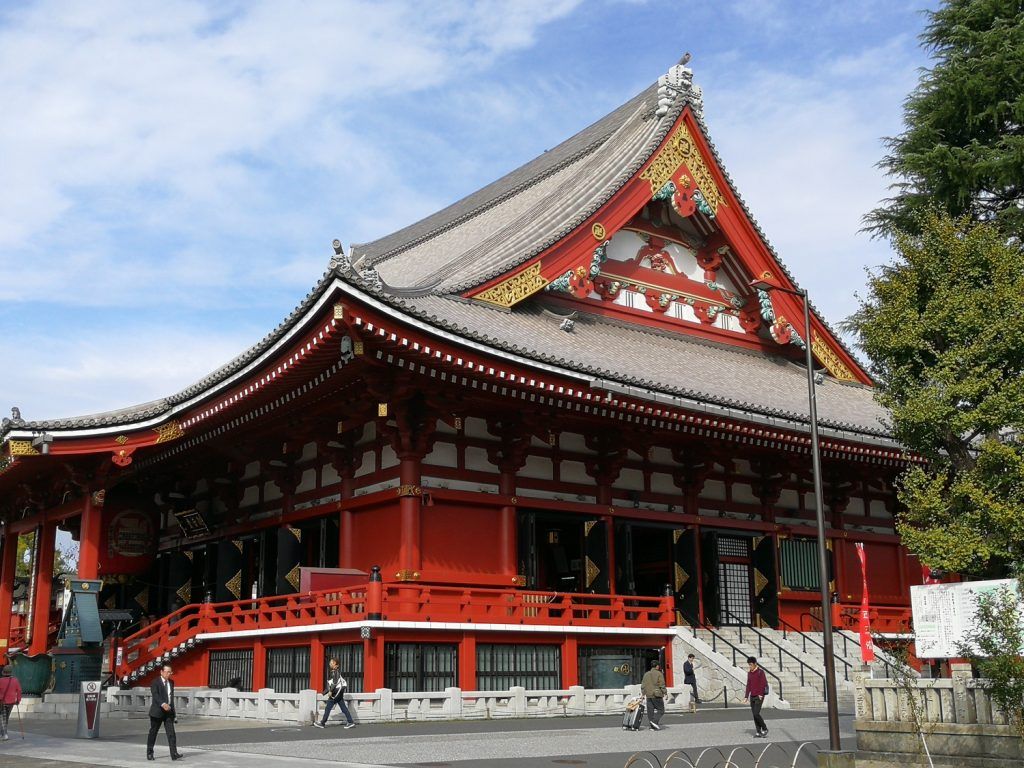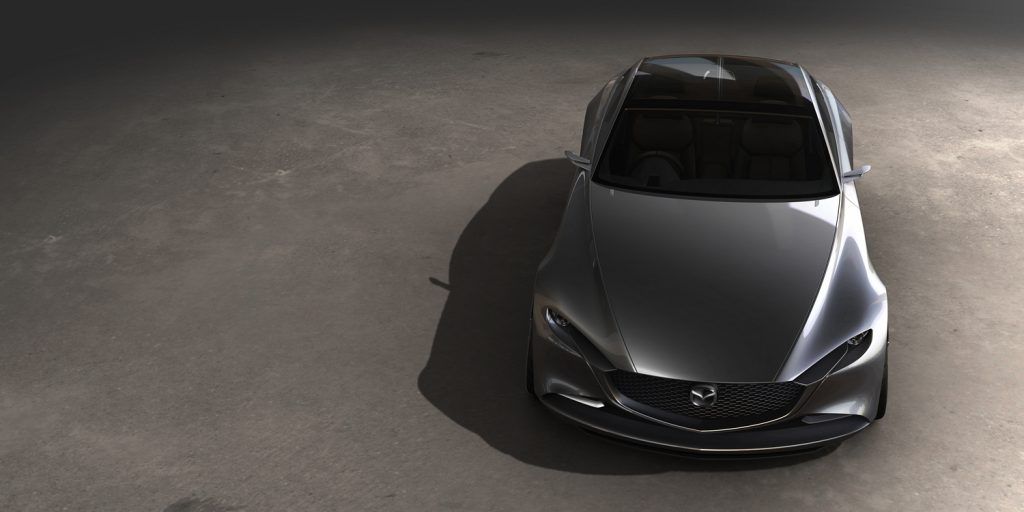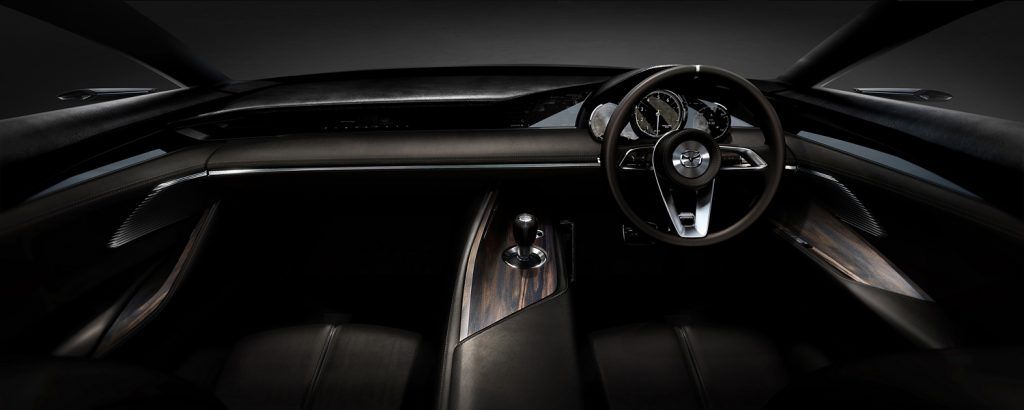Exploring The True Nature Of Kodo
Mazda’s Kodo (Soul of Motion) design language was first introduced to the world in 2010 in the form of the Shinari concept vehicle. The motivation behind this design ethos was, and very much still is, the ‘dynamic beauty of life’ and with its more muscular design characteristics, Shinari shows us that this form of motion can be interpreted as the power and elegance of a wild animal as it moves.
However, as the Kodo design language matures, so it seems does its true essence. Mazda New Zealand took us to Japan to witness first hand their history and culture and, in turn, explore the true nature of what Kodo is.
We arrived in Tokyo, Japan at the same time as Typhoon Lan; in fact we had to circle for an hour before being allowed to land, and although the force of the storm was less than forecasted, Mother Nature exercising her might meant the venue for the Mazda design forum, unfortunately, had to be changed – but I’ll get to that soon.
We stayed at the luxurious Strings Hotel in Shinagawa, one short rail ride from Tokyo’s city centre. With its reception on the 26th floor, the hotel has an upmarket business feel, but it also has a vast, open and uncluttered design to its centre.
In preparation for the forum, Mazda NZ had organised a full-on itinerary for us; with each event or experience having a Kodo hook, introducing us to core Japanese aesthetics such as Wabi (transient and stark beauty), Sabi (the beauty of natural patina) and Yugen (profound grace and subtlety) – so where better to start than the fish market?
The Tsukiji fishport market is one of the world’s largest fish markets and handles more than 2000 tons of marine products every day. Although, over the years, it has very much become a tourist attraction, it is a working market, with the tuna auctions beginning at around 5am and activity running through to early afternoon. A strong traditional aesthetic delight can be found in Japanese cuisine, and we watched as the Tsukiji craftsmen skillfully carved the seafood for distribution to local sushi chefs and itamae.

Shopping was next; in the retail suburb of Ginza. And although this may sound far removed from the Japanese heritage and traditions we were seeking, an area filled with desirable (and way out of my price range) global luxury brands is a perfect place to people watch and therefore the ideal way to experience first hand Jo-ha-kyu, the concept of modulation and movement. And despite the hustle and bustle that makes up any popular mall or high street, the storefronts in Ginza are pristinely presented, creating a modern and very enticing vista – thankfully I managed to keep my Visa card undented.
A short bus ride had us on the grounds of the Imperial Palace, guarded admirably by the statue of 14th-century samurai Kusunoki Masashige. Cherry blossom features heavily in the surrounding parkland and we spent a while beside the Chidorigafuchi moat admiring the nijubashi (bridges). The stark contrast of the aged patina (Sabi/Koko) of the samurai statue standing boldly amid the naturally groomed beauty of native fauna (Shizen) was a lesson unto itself.
Although the Emperor’s inner palace itself cannot really be seen from the Kokyo Gaien plaza we stood on, we were lucky enough to see a member of royalty (maybe even the Emperor) leave the establishment by car – good timing, some would say.
Despite having a full event calendar, we did have time for a cuppa – well a Japanese tea ceremony to be precise. Dating back to the 9th century, Chado ‘way of the tea’ is very much a cultural event that demonstrates respect through grace and good etiquette. From preparation and cup selection to the correct amount of stirring and tapping, it is a precise Kata that is barely ever perfected and is counted as one of the three Japanese arts of refinement.
The lessons continued at night too. Dinner at the Moon restaurant at Roppongi Hills had us eating fine French cuisine while overlooking the coloured neon lights of the city from the 52nd floor and in true Yugan style, we headed to the rooftop for an al dente view of the moon rising gently over the vibrant pulse of Tokyo.
Next day had us visiting the Sensoji Buddhist Temple (aka Asakusa Shrine). It has a legend that dates back to the year 628 where two brothers repeatedly fished the golden statue of Kannon (Goddess of Mercy) from the Sumida river. The Sensoji itself was constructed in 645AD and is Tokyo’s oldest temple. With its emphasis on the wholeness of nature and character in ethics, plus its celebration of the landscape, Shinto-Buddhism is considered to be at the fountainhead of Japanese culture and sets the tone for Japanese aesthetics.

Following about six months of planning and negotiation, the Mazda Design Forum was scheduled to be outdoors at the Tokyo National Museum. Established in 1872, it is the oldest Japanese national museum and their largest art museum. It houses a comprehensive collection of artworks and archaeological findings that focus on Japan and its culture, so the perfect venue. However, thanks (or no thanks) to the forecasted arrival of Typhoon Lan, the plug was reluctantly pulled and proceedings took place at one of Mazda’s flagship showrooms. Mind you, although this was begrudgingly a last-minute decision, the way the event unfolded, you’d be hard pushed not to believe this hadn’t been planned for months.
The showroom was laid out with class and finesse. The main room featured the previously revealed Mazda RX Vision concept car, shining brightly in Soul Red crystal, while a yet-to-be-unveiled vehicle waited patiently under silk on the other side of the giant screen. Smaller breakout rooms contained creative art (Shibui) and natural plant pieces (Kado) that we subsequently discovered were inspirational muses.
You see, Mazda believes a car is more than just a means of transport or a mass of metal. It should be a vital presence in people’s lives, like a friend or family member. Mazda’s Kodo design philosophy is all about breathing life into the very form of their cars, creating cars with a vitality that makes them truly alive and it’s these values they are looking to expand on with future generations of vehicles.
‘The pursuit of a unique elegance’ was the theme of Mazda’s Design Forum. In their own words: “A demand for an elegance that traced its heritage right through classic Japanese aesthetics – a beauty that is subtle and restrained, yet rich and abundant. Superfluous elements are carefully eliminated until only that which is essential remains. In this style, a sense of richness emanates from something that appears deceptively simple in design.”
Their mission is to craft a form that is beautifully simple, with all superfluous elements stripped away, and then breathe life into this creation through an exquisitely honed display of light across its body. Producing a car with a dignified presence, yet with a subtle yet pervasive allure that shines through… introducing the VISION COUPE.

What lay beneath the silk was a thing of beauty. Based on the ‘golden ratio’ of classic coupe proportions, the Vision Coupe is sleek and powerful and the play of light over its bodywork makes it very, very alluring. Bringing out the beauty of natural phenomena through exquisite, ever-changing patterns of light is an aesthetic that is unique to the art of Japan. The reflection of light over the Vision Coupe’s surface took Mazda craftsmen more than two years to perfect. The new Vision extends to the inside too. The cockpit layout is symmetrical and the Jinba-Ittai ideal of intuitive operation has also been brought into the controls. Drivers can bring up information with a quick touch of the centre console, like a jockey stroking the neck of his or her horse.

The next day, with the image of the Vision Coupe still fresh in our minds, we headed to the Tokyo Motor Show, where even more treats were in store. The issue with a lot of concept vehicles is that many of them never see the light of day in terms of production. However, as we witnessed with the Shinari, Mazda engineers have a way of interpreting design concepts and bringing them to life. Which leads me onto the KAI (ahem) Concept.
Unveiled at the show, the Kai is a stunning looking car of Mazda 3 proportions. It displayed much of the new Kodo design aesthetics, as it performed its own light show, gently pirouetting on the Mazda stand. Maybe the fact that it looked ‘paired’ beside Mazda’s new engine the SKYACTIV-X (an engine that crosses the divide between petrol performance and diesel efficiency) or that the Kai sported door handles, whatever the reason, it appeared more production than ‘concept’.
We managed to gain personal interviews with Ikuo Maeda, managing executive officer in charge of design and brand style; Ichiro Hirose, managing executive officer in charge of powertrain development, vehicle development and product planning; and Yasutake Tsuchida, concept car chief designer, where we learned more about the Vision Coupe, the Kai and the SKYACTIV-X, but they were all very reserved with concept to production information.
Next morning we took the 300+km/h Shinkansen Bullet Train to Hiroshima and the home of Mazda. Mazda headquarters seems like a city all to itself. It is a 170-hectare behemoth that designs, conceptualises, prototypes, tools, manufactures, tests and ships all from one place – there is even a museum and a supermarket there. Our fully immersive brand tour included the near-100-year history of Mazda (did you know they were once a cork manufacturer and started out making 3-wheeler motorbikes? no, nor did I), we were given a clay model making demonstration (and given a chance to try for ourselves), taken for a tour of the tool and die plant (where we saw a mould that looked mysteriously like a Kai) and last, but not least, allowed to roam around the museum where we salivated over iconic vehicles such as the Cosmo Sport, 787B and Rotary RXs.
To wrap up our time in Japan and Hiroshima, Mazda NZ took us to Miyajima Island, a UNESCO World Cultural Heritage site, where we saw the Grand Torii Gate, prayed for good luck at the Itsukushima shrine and five-storied pagoda, and took the cable car up Mount Misen before travelling to Peace Park, paying our respects at the A-Bomb Dome and ringing the Peace Bell.
Jiguzagu (zig/zag); while, through the earnest development of autonomy and driverless vehicles, the automotive world appears to be steering towards a more removed mode of transportation, Mazda is most certainly a brand that is ‘zagging’. Through continued focus on Jinba Ittai (horse and rider as one) and the evolution of a deeper more meaningful Kodo, they are looking to produce vehicles that delve to the very core of Japanese aesthetics.
“Seeing one of our cars should invoke the feelings you get from appreciating a work of art! Seeing its sculpted beauty and the shifting reflections as it catches the light, evoking speed, grace, and power, you’ll feel an irresistible urge to drive it.”

